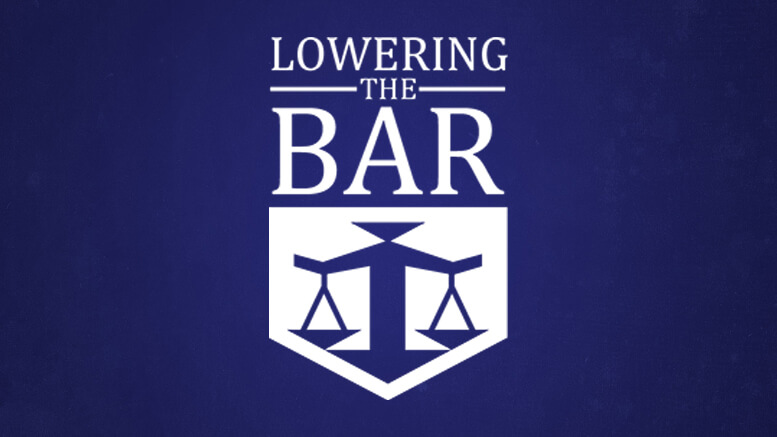Okay, “strategy” is not the right word, because far be it from me to suggest that anyone would do this deliberately. But if one were to accidentally trip on a phone cord while visiting the IRS to discuss a large unpaid tax bill, an even larger personal-injury award might just turn that frown upside down.
Such was the bad and/or good fortune of William Berroyer, Sr., who walked into an IRS office to discuss a $60,000 tax debt and walked out with an injury that led to an $862,000 judgment.
According to the court’s order (the parties seem to have waived a jury), Berroyer was 61 at the time of the incident in 2008. He owed about $60,000 in back taxes, and was at the IRS office in Hauppauge, New York, to discuss that. He met with an agent in a conference room that held some file cabinets as well as the table, chairs, and a telephone with a cord that ran across the table toward Berroyer and then under the table. Although Berroyer said he was “very nervous,” the meeting was amicable and they agreed on a payment plan. As Berroyer got up to leave, he tripped and fell, hitting a file cabinet. He was able to walk out, but later called from the parking lot to say that his shoulder hurt and his legs felt funny.
He was treated for a spinal injury, and later sued for $10 million.
It looks like the trial did not focus on liability, probably because the IRS had to concede that the cord wasn’t taped down as it should have been, creating a tripping hazard. Or, as the complaint put it, defendant used an “excessively long telephone and/or utility cord … underneath a conference room table so as to present a trap-like condition … [and] so placed as to be hidden and non-apparent.” (Editing tip: something that is hidden is not apparent. Both terms not required.) But there was some question about how the trap-like condition was sprung.
Plaintiffs’ expert (yes, an expert in a tripping case) conceded that if one saw a cord extending across a table and then going under the table, “it would be fair to assume that the cord continues under the table.” He also conceded the IRS had used that room for 20 years and that “hundreds if not thousands of taxpayers … sat in the same chair and left without incident.” But Berroyer testified that the cord got wrapped around his foot, and because (somewhat surprisingly) there was no government agent under the table to witness how that happened, the defense did not have much to work with.
So the main issue was whether Berroyer was really injured and, if so, how badly. He alleged a serious spinal cord injury that basically confined him to a wheelchair. To use a legal term, this did not totally jive with his medical records. After ten days in the hospital, the diagnosis was “acute paraplegia, psychogenic in origin,” and the records also noted, “Neuro exam and MRI findings not compatible with subjective complaints …. Affect is somewhat inappropriately bright.” Translation: seems to be in his head, tests don’t show any problems, seems oddly happy to be seriously injured. When Berroyer was deposed, he denied any prior back problems. Again, medical records said differently.
The government’s medical expert, who the court found “very credible,” said that Berroyer did not have any of the symptoms that would be expected with a major spinal-cord injury. The doctor did think Berroyer had probably bruised his spinal cord, but said that if so it was a mild injury that had long since resolved. Asked whether plaintiff was now faking or malingering, he responded, “I don’t use the terms faking or malingering. I use the term nonphysiological.”
The judge ultimately found that the IRS had been negligent and that Berroyer had suffered a “mild spinal-cord injury,” which is not surprising because of the expert’s concession. But he didn’t buy the claim that Berroyer was wheelchair-bound (partly because video showed he wasn’t). Nor did he find Berroyer’s medical witnesses very credible, noting that he didn’t call as a witness the doctor who’s treated him for the past 25 years.
Your question at this point is probably, then how did the guy end up with $862,000, and my answer is, I do not know.
The court’s order entitled him to something, based on the findings that negligence caused an injury. So the $112k in medical expenses and some minor amount for past pain & suffering would make sense. But the judge awarded him $600k for pain & suffering, past and future, and tossed in another $150k for Mrs. Berroyer because of the alleged “loss of services.”
I guess I could also understand giving him $60k for his tax bill, although I wouldn’t say that. Did the judge add a zero by mistake?
Note: although the tax lawyer who sent me this did describe it as a “possible new tax strategy,” I’m pretty sure he was kidding. Still, IRS offices might want to make sure their phone cords are taped down.
Correction: There was no jury because there’s no right to one under the Federal Tort Claims Act, the statute that authorizes private lawsuits against the government. Thanks to Prof. Kathryn Kelly of Catholic University for the correction.
